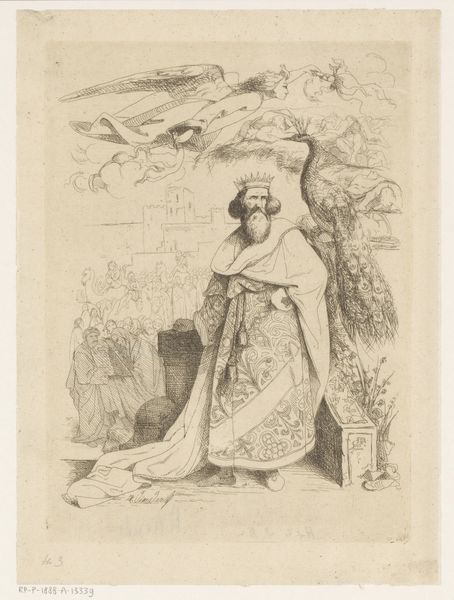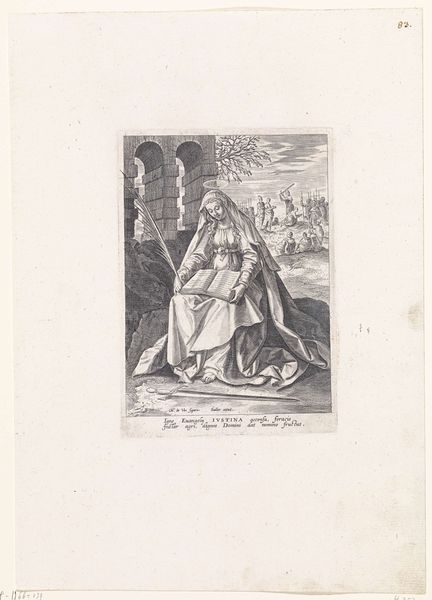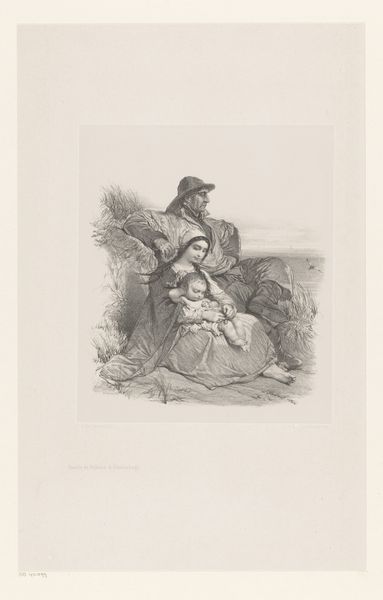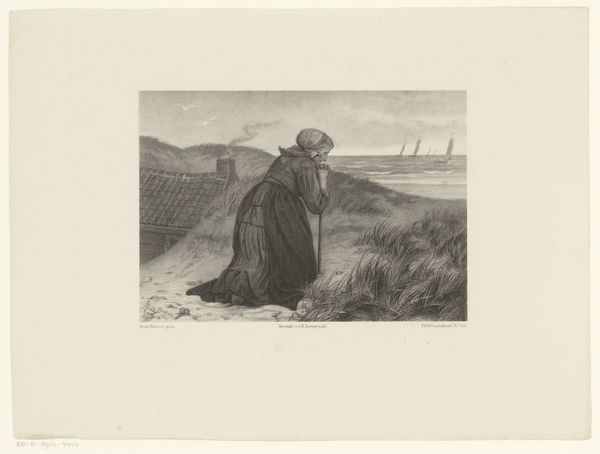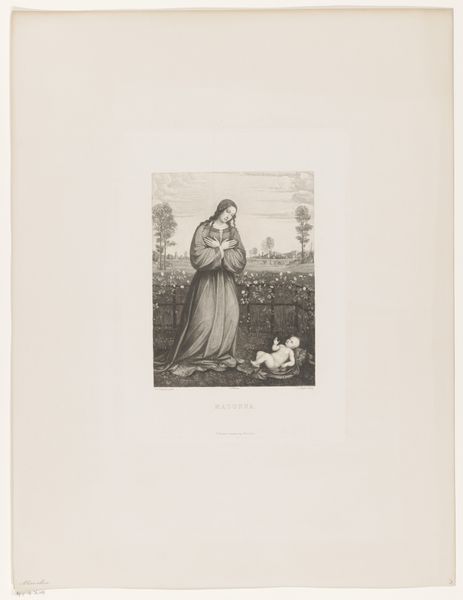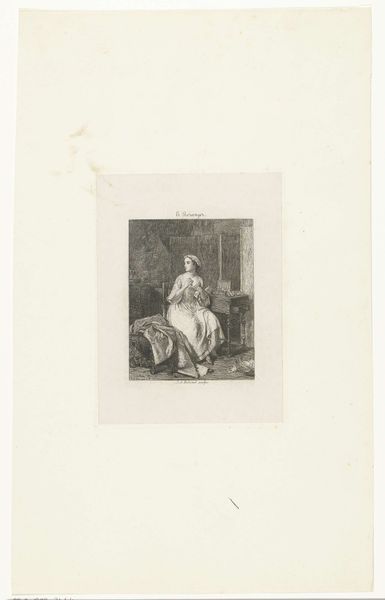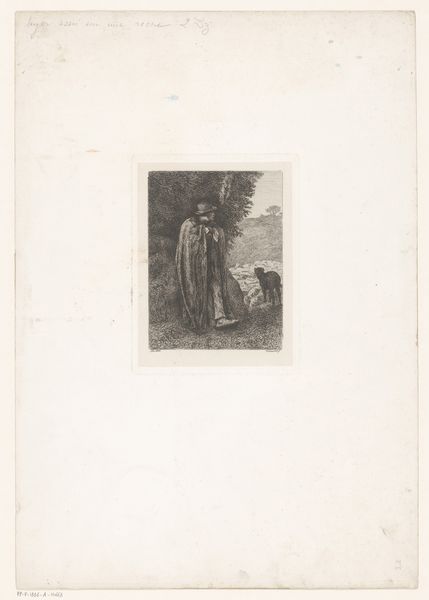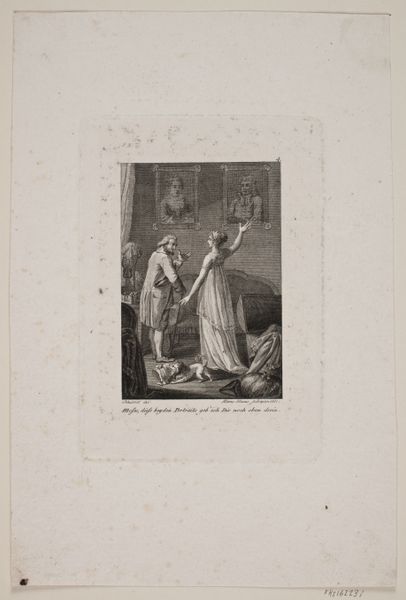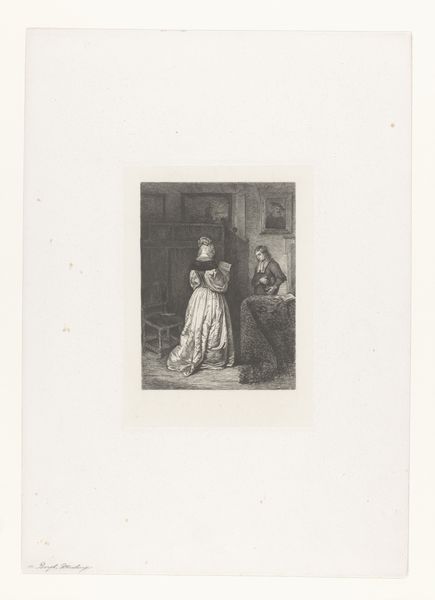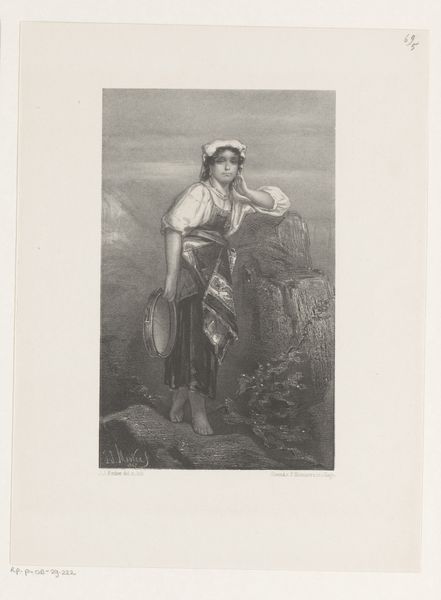
Dimensions: height 296 mm, width 231 mm
Copyright: Rijks Museum: Open Domain
Curator: This is “Children Mourning at a Grave,” an engraving made after 1861, credited to Edouard Vermorcken. What are your initial impressions? Editor: Immediately, the heavy contrast strikes me. The stark white of the children’s clothing against the dark, enveloping shadow gives the scene a weighty solemnity, almost suffocating. Curator: Note the compositional structure. Vermorcken frames the central figures—the children and the grave—within a shallow foreground space. He directs our gaze through meticulously etched lines to the implied horizon, that then subtly flattens the representational space of grief into almost universal shape of loss. Editor: The social context is compelling. Printmaking allowed for wide dissemination of imagery. What would it mean for audiences to repeatedly see grieving children represented? I wonder if this taps into emerging 19th-century ideas of childhood innocence and vulnerability, and makes a quiet political statement about protecting it. Curator: Perhaps. Observe the textural variation created by the engraving. The dense cross-hatching mimics the rough texture of earth around the grave, while the delicate, linear strokes define the children’s soft garments. He generates volume without overt manipulation of light—remarkable. Editor: It's interesting that this appeared during the Romantic era. It's tapping into those familiar themes of loss, emotion, and the sublimity of nature as it contrasts the harsh realities with delicate flora that intertwines with the weathered wooden cross—very poetic. Does this romanticisation offer solace or merely exploit the rawness of sorrow, feeding into sentimental public sentiments on tragic events that touch lives deeply? Curator: Ultimately, it's that tension between raw emotion and structured composition that makes this print so intriguing to study. The starkness against tenderness. Editor: Absolutely. And that tension also hints at some key societal shifts and anxieties within 19th-century society. Food for thought!
Comments
No comments
Be the first to comment and join the conversation on the ultimate creative platform.

